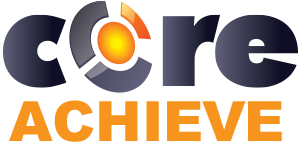Navigating the Challenges of Multi-generational Learning with an LMS
June, 06 2023
Other posts:
Enhancing Team Dynamics for Effective Group Decision-Making with LMS Integration
Organizations increasingly rely on collaborative efforts to solve complex problems, innovate, and adapt to change, but how do we ensure that collaboration is happening.
Maximizing Small Business Potential with Training Technology
Training technologies can push small businesses ahead of their competitors, but what are the factors that go into choosing the right technology?
Unlocking Employee Potential: The Transformative Benefits of an Interactive Learning Management System (LMS)
Interactive training allows for unlocking employee potential, but how is it done?
Building a Robust Sales Pipeline with Training
Every organization wants a streamlined sales pipeline, but building one requires a series of interlocking activities with one of the most important being training.
Strategies for Adapting In-Person Training to Online Platforms
Online training is one of the most flexible ways of delivering training across organizations, but how do you even begin to adapt in-person training into online?
In the past couple of generations, technological advancement has dramatically increased year after year.
An often felt, but unspoken, challenge of organizations is accommodating a multi-generational workforce. With baby boomers, Generation X, millennials, and Generation Z working together, each generation brings distinct learning preferences, expectations, and technological comfort levels. To address this diversity and create an inclusive learning environment, organizations can leverage a Learning Management System (LMS).
An LMS provides an adaptable learning environment that could easily fulfill all the wants of each generation without needing multiple systems. But, before addressing the LMS, it critical to understand the generational differences within training and learning.
Understanding Generational Differences
Generational differences happen with almost every aspect of life and, consequently, also learning. As new systems, products, or global events develop every generation is affected but all generations internalize it differently, resulting in learning preferences.
Baby Boomers
As baby boomers grew up in the least-technology advanced generation, they often prefer structured, classroom-style learning with a focus on mentorship and face-to-face interaction.
Generation X
Generation X exists on the cusp of personal computers becoming available. This unique situation makes Generation X appreciate self-paced learning blended with collaboration and feedback opportunities.
Millennials and Generation Z
The generations most immersed in technology are Millennials and Generation Z, as such, they are comfortable with technology-driven learning experiences, such as microlearning, gamification, and social learning. While grouping these two generations works for organizations looking to increase their training effectiveness, there are some minor differences with the type of content or interactions that they prefer.
Challenges in Multi-generational Learning
The diverse learning preferences of different generations can present challenges when designing effective training programs. Challenges like technology adoption, varying learning styles, and communication and collaboration difficulties will exist and are reflective of the preferences outlined above. Older generations may struggle with technology adoption, hindering the implementation and usage of an LMS. Additionally, varying communication styles and expectations may hinder knowledge sharing and impede the learning process. All of this can make multi-generational learning a challenge. However, if the challenge can be overcome, training will be much more effective.
Leveraging an LMS for Multi-generational Learning
Despite the challenges, an LMS can be a powerful tool for bridging the generational gap and fostering an inclusive learning environment. An LMS offers customized learning paths tailored to individual employees' needs and preferences. Organizations can provide a range of learning resources and formats, such as videos, interactive modules, and downloadable materials, to cater to different generational learning styles.
Mobile learning capabilities are essential in engaging all generations, as it allows employees to access training materials conveniently on their smartphones or tablets. By incorporating gamification elements like badges, leaderboards, and rewards, organizations can boost engagement and appeal to younger generations. Microlearning, with its bite-sized and focused content, can benefit older employees who prefer concise and targeted learning experiences.
An LMS equipped with social learning features, such as discussion forums, chat functionalities, and collaborative projects, encourages knowledge sharing and collaboration across generations. Peer-to-peer learning and mentorship opportunities can be facilitated, enhancing the overall learning experience. A user-friendly and intuitive LMS interface is essential for ensuring ease of use for employees of all generations. Clear instructions, simple navigation, and comprehensive support resources help older employees feel more comfortable with the technology.
In a multi-generational workforce, addressing the challenges of learning and development requires a strategic approach. Implementing an LMS can play a pivotal role in bridging the generational gap and creating an inclusive learning environment. By offering customized learning paths, embracing mobile learning, incorporating gamification and microlearning, fostering social learning, and providing an intuitive user interface, organizations can navigate the challenges of multi-generational learning successfully. An LMS empowers organizations to meet the diverse learning needs of their employees, ensuring a more effective and engaging learning experience for all.
Get started with CoreAchieve today for free.
Photo by Austrian National Library on Unsplash

Leave comment: